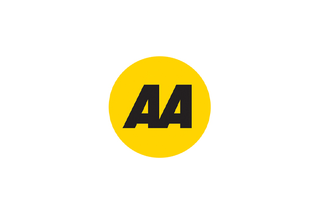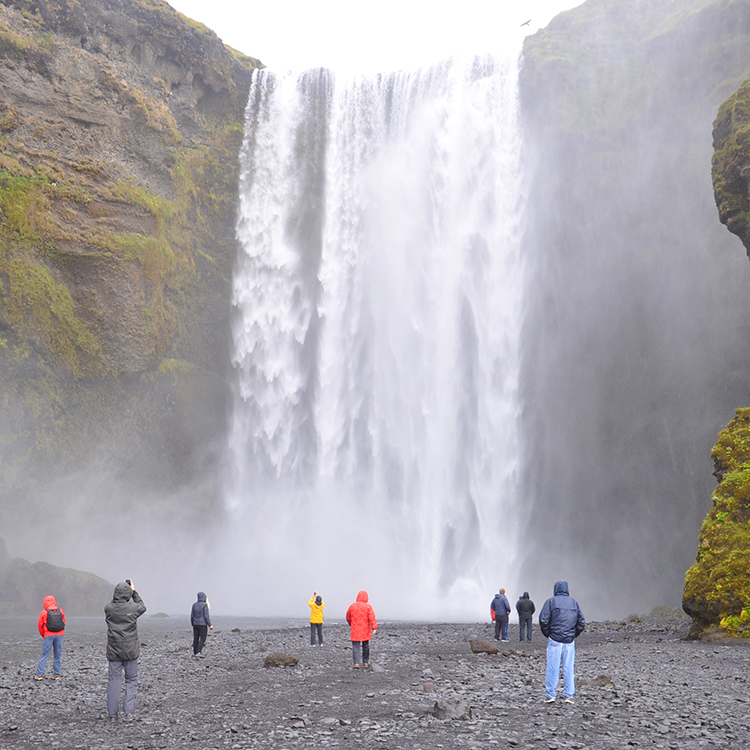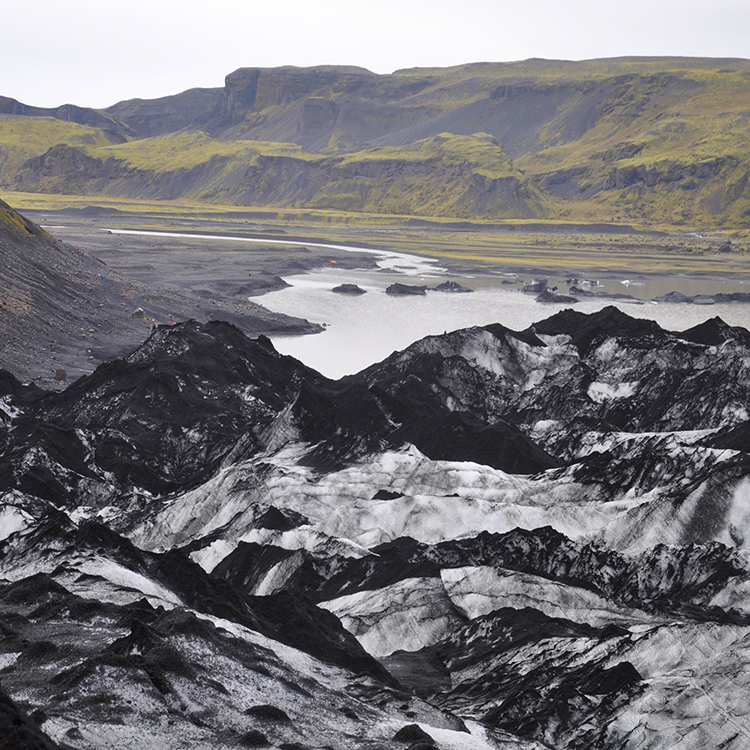
A cycling tour in Puglia, Italy
Take a cycling journey through the Puglia region in the heel of Italy’s boot to experience food, wine and fascinating history.

We take a five-day road trip through Iceland to discover Viking history, volcanic activity and dramatic scenery.
Iceland may be home to only 384,000 people but on the main road south out of Reykjavik, it’s bumper to bumper traffic. We’re on the popular 1,322-kilometre tourist route that links the main towns and provides access to remote parts of the country.
In early September the temperatures hover around 13°C, the road is ice free, and daylight lingers until about 8pm. With only five days in Iceland, we’re sticking to the southwest’s concentration of fire and ice scenery: crater lakes, geysers, glaciers, volcanoes and waterfalls.
Not far from Iceland’s capital I find myself almost alone on the road with nature taking over. On one side, fields sweep towards a glacier. On the other, the Atlantic Sea hits a rock-studded shore and seabirds wheel overhead.

The Fontana Geothermal Baths at Laugavartn where visitors sink their bodies into hot pools and their teeth into crunchy bread baked in geothermal earth ovens will have to wait. Closer to hand, near the town of Selfoss, is the Fridheimar Tomato Farm and the promise of a geothermally prepared snack.
Horticulturists Knutur and Helena tap into geothermal energy to grow tomatoes in artificially lit green houses. The enterprise produces tonnes of them every year. Visitors are treated to tomato-infused dishes in their restaurant under the vines. Americans across from my table tuck into green tomato and apple pie with whipped cream.

Replete, we wander outside to meet Icelandic horses. These small, shaggy-maned relatives of Shetland and Connemara ponies have unique gaits that they obligingly show off. Hardy and plucky, they have been carrying their riders along sandy shores and through rivers and snow since arriving with Norse settlers in the 9th Century.
Back on the road the GPS re-directs us to the Fontana Baths where I’d planned to salute my Viking ancestors with a dash from a steam bath into the ice-cold Lake Laugarvatn. But a sign to Secret Lagoon tempts us off piste to steam-venting terrain and a large human-made pool fed by bubbling hot springs. Judging by the many bathers, the secret is out.
“You’ll have plenty more chances to experience Iceland’s pool culture,” explains Siggy, Fontana’s genial owner, when I call to apologise for the no-show. “The British have their pubs. Icelanders have their geothermally-heated pools and springs. They are favourite places for exercise, catching up with friends and talking business.”
Back on track we head for Hella, another dot on the map and home to Hotel Ranga. It’s dark by the time we arrive and the hotel looks to be in the glorious middle of nowhere. There’s a hot tub in the field right outside my room and after dining on Reindeer carpaccio and Arctic Char fish in the excellent hotel restaurant, I sink into the al fresco tub and hope for a sign of the Northern Lights. In vain.
A nearby museum compensates for the absence of Northern Lights. Earthquake-prone Iceland sits on a mid-Atlantic range where two giant plates are slowly pulling apart. Magma from the earth's core gets near the surface causing volcanic eruptions on average every four years. The earth moves under my feet at the Lava Museum with simulated explosions of the country’s mightiest volcanoes, including of the 2010 eruption of Eyjafjallajökull that blackened the skies of Northern Europe and disrupted air travel for days.
From fire to ice. Back on the Ring Road, Solheimajokull Glacier beckons 55 kilometres west. En route are Seljalandsfoss and Skogafoss, two mesmerizing waterfalls that drop from great heights and drench onlookers with their far-reaching spray.

At Solheimajokull glacier our guide is waiting with crampons and ice axe. “I trained on Fox Glacier,” he says with the hint of a Kiwi accent. The group follows him up to ice sculptures, water cauldrons and spine-chilling crevasses. It’s an absorbing three hours; we listen sombrely as he describes how far the glacier has retreated in the ten years he has worked here.
The effects of climate change made world headlines on 18 August 2019 when Iceland’s once mighty Okjokull Glacier, which spanned 38 square kilometres at the beginning of the 20th Century, was officially declared dead. At the funeral, Iceland’s Prime Minister, Katrin Jakobsdottir, laid a plaque and expressed hope that the ceremony would inspire not only Icelanders but also the rest of the world because Okjokull is “just one face of the climate crisis.” Jakobsdottir is a staunch environmentalist and aims to make Iceland carbon neutral by 2040.

By now I’ve got the hang of Icelandic surnames. Sons have the patronymic affix ‘son’ and daughters the affix ‘dottir’. It’s not surprising to learn that Iceland, with a culture carved from centuries of isolation, legally requires Icelandic names of its citizens.
Pronouncing Iceland’s longer place names has been a challenge. The GPS mashed most of them on our journey, except for Vik, the most western point on our journey. Here, at Berg restaurant, we enjoy another meal of Arctic Char, which tastes somewhere between trout and salmon. Near Vik is a black sand beach pounded by the Atlantic, and wave-battered sea stacks where puffins, fulmars and guillemots nest.
On the road back east towards Grindavik, the rain and mist lift to reveal a rocky landscape that looks as if it has dropped from the moon. Little wonder foreign films and the epic Game of Thrones are shot on this crater-pocked coastline.
Grindavík opens to the Reykjanes Peninsula, noted for its diverse volcanic and geothermal activity and for being the only place in the world where the Mid-Atlantic Ridge is visible above sea level. A footbridge spans the rift to show how Iceland sits on two continents, Europe and North America.

Five days in the country has increased the desire to see more of it, including the lively capital city. A good place to start is at the top of Hallgrimskirija church with knockout views of Reykjavik and its harbour where Vikings settled over a thousand years ago.
On my final evening in Iceland I heed the call of the Blue Lagoon, Iceland’s famous geothermal spa that sits in a lava field. There is nothing like semi-submersion in a soporific haze of steam to round off a night.
This story is from the Summer 2025 issue of AA Directions magazine.